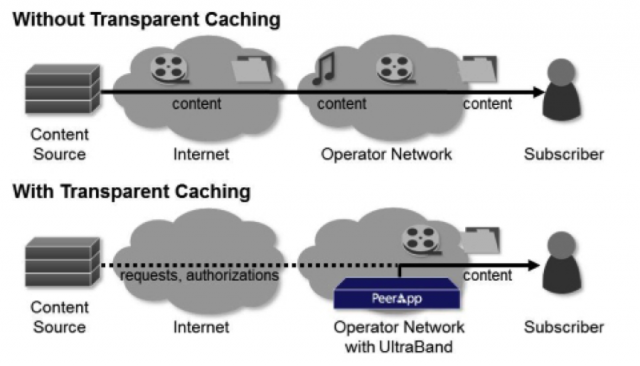Cybersecurity & Standards, Privacy & Data
“Open Caching,” Open Standards, and Privacy
In a recent letter, FCC Commissioner Ajit Pai claims that Netflix took steps to “impede[ ] open caching software from correctly identifying and caching Netflix traffic[.]” Absent from that letter is a discussion of what “open caching” is, whether software used by ISPs and others should be able to identify the source and content of traffic requested by Internet users, and what limitations should apply to how such information is used. Instead, the letter charges that Netflix’s nonparticipation in an unnamed “effort to develop open standards for streaming video” threatens “standards collectively agreed upon by much of the industry[.]” The letter does not explain what those standards are or how they were agreed upon. The implications of this dustup for both privacy and the development of open standards warrant attention.
Open or “transparent” caching can reduce the demand placed on last-mile network infrastructure by bandwidth-intensive traffic like streaming video. Transparent caching can embed popular content on servers at the edge of, or even within, the ISP’s network so that it has to travel a shorter distance to reach the subscriber. PeerApp, one provider of transparent caching software, visualizes transparent caching as follows:
As described by Dan Rayburn, an expert on streaming media and a member of the Streaming Video Alliance (SVA, the industry group alluded to in the Commissioner’s letter), a transparent cache “automatically ingests and serves content as it becomes popular and usually does not require operator intervention to continuously modify the network or the caching solution to support a new popular service or device.”
One can see the potential benefits of transparent caching: as an ISP’s subscribers increasingly request certain content, that content would move automatically to cache servers within the ISPs network, making the delivery of that content faster. For this caching to work, however, the cache servers must be able to identify the content an ISP’s users are requesting, whether through deep packet inspection or other means.
Commissioner Pai’s letter takes issue with Netflix’s decision to prevent open caching software from identifying the content its subscribers are requesting. According to the Commissioner, this thwarts open standards development. In its response, Netflix states that it “has obscured certain URL structures to protect our members from deep packet inspection tools deployed to gather data about what they watch online.”
Consumer privacy is a relevant consideration for the delivery of any Internet traffic and is particularly relevant for streaming video. Indeed, the Video Privacy Protection Act imposes distinct privacy requirements for sharing information about what we watch online. Moreover, given that streaming video and other “real time entertainment” make up 60 percent of Internet traffic in North America, addressing privacy issues in the context of streaming video will impact how privacy is handled in the transmission of Internet traffic generally.
The best way to ensure privacy concerns are adequately addressed is to do so through open standards bodies with low barriers for entry and participation. Examples of such organizations include the World Wide Web Consortium (W3C) and the Internet Engineering Task Force (IETF). CDT participates in standards-setting efforts by both the W3C and IETF. For a technical specification to qualify as an open standard under the W3C process, it must meet certain criteria for transparency, relevance, openness, impartiality and consensus, availability, and maintenance.
SVA is not an open standards body and has not held itself out as one. It is an industry association including ISPs, content delivery networks, equipment manufacturers, content providers, and others. SVA coordinates efforts to tackle shared technical problems and achieve common objectives. These efforts are valuable but they should not be mistaken for the work of an open standards-setting body. They are one approach among many to deal with the specific problems that streaming video causes for network operators.
Earlier this year, Stacey Higginbotham at Gigaom discussed transparent caching and the unique demands of streaming video. The article looks to both Netflix’s work on its own content delivery system (Open Connect) and transparent caching as potential solutions: “It’s clear that having more content stored at the edge is the way to go — be it in Netflix or Google-specific caching servers or via some kind of transparent caching.” She concludes hopefully, saying that perhaps “we might actually see something done in 2014.”
As 2014 draws to a close, we do not yet have a silver bullet to solve technical or policy issues in the delivery of streaming video. SVA continues its work on open or transparent caching and Netflix continues its work on Open Connect. All of this work is for the better. But if any approach is to emerge as the de facto standard for delivery of the majority of Internet traffic, it should take privacy concerns into account. And the best way to ensure that those concerns are addressed is through an open process with an open standards setting body.



